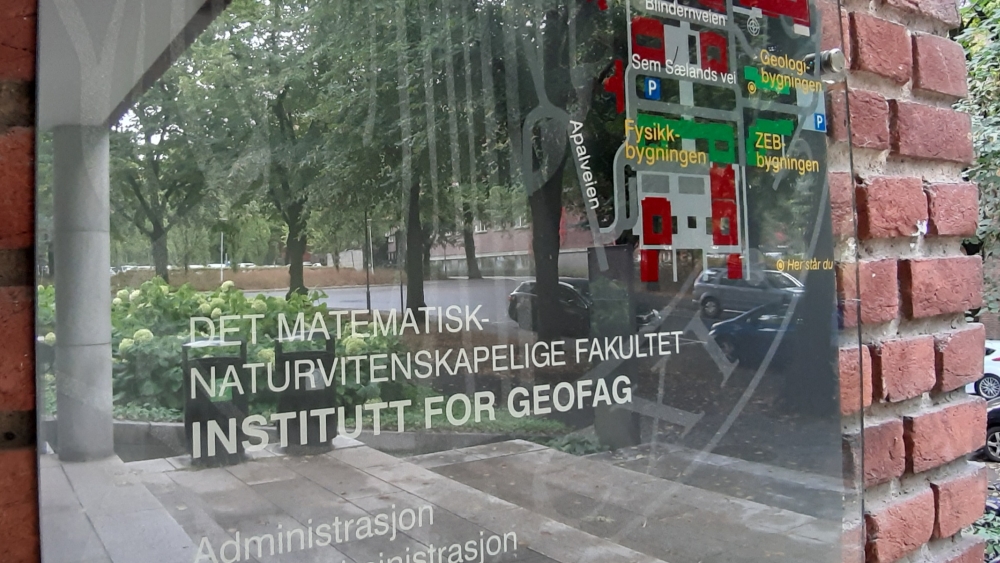Starting this year, the Department of Geosciences will go from having six to seven scientific sections. The changes are due to the creation of four new sections, each of which partly take over after a section in the old section structure, but which also organise the academic staff in smaller and more robust academic communities.
Four new sections
The changes to the section structure means that the scientific staff in environmental geology are now gathered in a separate section – Section for Environmental Geosciences. Employees mainly come from the old section for geology and geophysics. The new section for environmental geosciences has a total of 18 employees and affiliates, and is led by Professor Helge Hellevang.
From 1 January, most employees in the academic community for geology and geophysics are part of the – Section for Study of Sedimentary Basins. However, some employees have got a new section affiliation to where they have the most academic connection. The scientific section for studies of sedimentary basins gains some employees from the SFF centre CEED, and has associated the research environment for CO2 storage. The section has 40 employees and affiliates, and is led by Professor Alvar Braathen.
Employees from the former GEO-PGP are now included, together with several others, in the – Section for Crustal Processes. Employees who work within research and teaching on processes in the Earth's crust, including petrology and mineralogy, earthquakes and volcanism, gather here. The section has a close connection to Njord, which is an interdisciplinary research centre for geosciences and physics at the MN faculty, University of Oslo. The section has 18 employees and affiliated, and is led by Professor Luca Menegon.
From the autumn of this year, a new Centre of Excellence (SFF) is coming; the Centre for Planetary Habitability – PHAB, which will be anchored as a section at the Department of Geosciences. The Centre willl be led by the Professors Trond Helge Torsvik and Stephanie Werner.
But not all the scientific sections change. The sections for Meteorology and Oceanography (MetOs), Geography and Hydrology (GeoHyd), and Geodidactics have not changed. CEED, which is a section and SFF centre, will end as a centre on March 1.
A more forward-looking organisation
The changes for the sections were decided late in November 2022. One of the principles behind the changes in the section structure was that a section should not have too many scientific employees. Geology and geophysics (GoG) in particular was a large section that was restructured, including by creating a separate section for environmental geosciences.
The Head of Department Bernd Etzelmüller points to several advantages of the reorganisation:
– These are adaptations that make us better equipped for collaboration on research and within education. It also ensures that we get a good section structure in place with fairly homogeneous professional environments in size. We in geosciences are spread over four buildings on Campus, which is obviously a challenge, says head of department Bernd Etzelmüller.
Involvement is important
In the process, the management has anchored the changes by involving employees as much as possible. The changes have been discussed continuously at seminars, general meetings and in other forums, says Etzelmüller, who is satisfied with the changes that have now been implemented.
In the autumn of 2023, there will be a new change in the section structure at the department. Then the Department of Geosciences will host a new SFF centre; the Centre for Planetary Habitability – PHAB, which becomes a new section and replaces the section for CEED.
Read more about PHAB here: SFF-grant to a new SFF-centre; Centre for Planetary Habitability – PHAB
